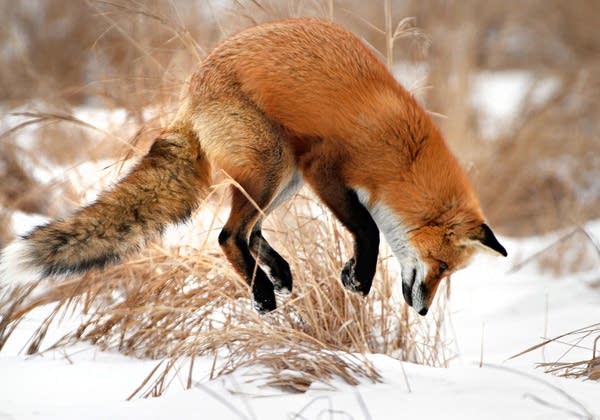Wildlife in the city: a photographer's passion
Go Deeper.
Create an account or log in to save stories.
Like this?
Thanks for liking this story! We have added it to a list of your favorite stories.

By SAM COOK, Duluth News Tribune
DULUTH, Minn. (AP) -- When Michael Furtman goes out to photograph wildlife, he usually doesn't pack an overnight bag. The Duluth nature writer and photographer has taken most of his wildlife photos right in the city.
In fact, all of the accompanying images in this photo essay, Furtman said, were made within Duluth's city limits.
"It's amazing to me all the drama that's going on right outside our back doors in this city -- all the wildlife drama," Furtman told the Duluth News Tribune. "It's absolutely incredible. Most people are completely unaware of it."
Turn Up Your Support
MPR News helps you turn down the noise and build shared understanding. Turn up your support for this public resource and keep trusted journalism accessible to all.
This fall, he watched and photographed the courtship and mating of a whitetail buck and doe, which he shared with his followers on his public Facebook page. Over the past year or so, he has shared countless images of otters, foxes, whitetails, warblers, owls and raptors on his Facebook page. He also sells the images to magazines, book publishers and others.
Some days, Furtman will simply drive to undeveloped places he knows in Duluth. He grew up here, haunting some of the same places as a young boy. He will look for tracks, if there's snow on the ground, and then spend more time in an area on foot.

Some days, he just goes into the woods of Duluth and walks around with his camera. That's how he found a memorable photo of a pine marten, along Amity Creek in east Duluth one day.
"I was photographing warblers that day," he said, "quietly walking along the stream bank. I just happened to catch a movement downstream."
He has come upon otters on the St. Louis River in the same way.
"The creeks in Duluth are great corridors for wildlife," Furtman said. "I'll spend a lot of time walking Amity Creek and other pockets like that."
He uses good equipment -- a professional-grade Canon camera and telephoto lenses.
"The vast majority of what I shoot is at about 400 millimeters," he said.
He uses a Canon 100-to-400mm zoom telephoto and a Canon 300mm telephoto lens. He often uses the 300mm with a 1.4x or 2x multiplier to increase its reach.
Some nice whitetail bucks live in Duluth, and Furtman has learned how to get close to them.
"You don't just walk into the woods and sit down like you would deer hunting," said Furtman, who also is a deer hunter. "If you want a photo of deer feeding or mating or bedding, you have to be a part of their world, and you have to be able to move with them. The key is to get them to accept your being there, and they will after a while."

He remembers photographing one buck bedding in snow.
"After that deer grew to accept me, I was able to follow him for over an hour," Furtman said. "I watched him relate to another buck and a doe and finally bed down. I was sitting 20 feet away, and he was perfectly content."
Other days can be challenging.
"Sometimes you go for days without triggering the shutter," Furtman said. "Some days you find the animals, and the light is wrong. Getting a memorable photo is a combination of having a cooperative subject, good light and attractive surroundings -- and activity that makes it more than just a snapshot."



